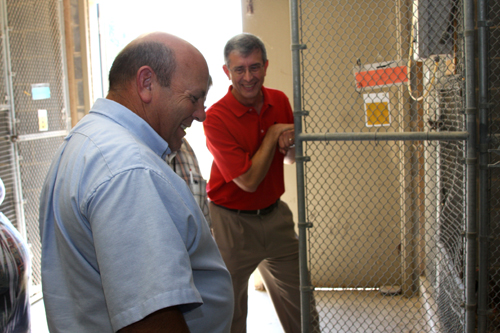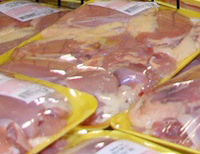The poultry industry in Georgia has grown steadily since the 1940s. Like all of agriculture, poultry has had its share of ups and downs. Right now, it’s facing a perfect storm created by high corn prices, escalated fuel prices and a down economy.
Georgia produces 1.4 billion birds and 3 billion eggs annually, giving poultry an economic impact of more than $13 billion a year on the state of Georgia. The industry also accounts for more than 100,000 jobs.
“If Georgia were a country, we’d be the fifth largest producer in the world,” said Mike Lacy, University of Georgia poultry scientist and head of the poultry science department in the College of Agricultural and Environmental Sciences.
Most of the cost of producing poultry meat and eggs is in the feed. In July 2010, corn cost about $3.50 per bushel. By June 2011, corn had jumped to $8 a bushel.
Fuel costs have increased almost as fast as feed prices. And a tough economy worldwide has kept demand for meat and eggs at a lower level than experts predicted. As a result, poultry producers have not been able to raise prices sufficiently to balance out higher feed and fuel prices.
To bring supply and demand into balance, producers are reducing flock sizes. Small flock sizes will help them be more profitable, Lacy said.
Despite the downsides, the future of the poultry production in Georgia is bright, Lacy told a group of Georgia Farm Bureau members assembled in Athens, Ga., for their annual commodity meeting. Demand for poultry meat and eggs will increase as the world’s population grows and the economies of developing countries inevitably improve.
“Being in Athens gives our experts [at Georgia Farm Bureau] insight into the research taking place at UGA, and they have the opportunity to talk about policy issues in the industry,” said Zippy Duvall, Georgia Farm Bureau president. “It also gives researchers the opportunity to hear from producers and learn what issues they have, as well as making connections at UGA that can benefit them on their farms.”
Duvall is a poultry farmer in Greensboro. Despite the uncertainty of the industry, he is rebuilding and remodeling his entire poultry operation.
“My comfort comes from being a grower for one of the most profitable plants in the state,” Duvall said.
Duvall attributed some of the decreased demand for Georgia poultry products to trade policy. “We’ve been left out of the world marketplace, and we need to support bilateral trade,” he said.
For poultry to grow, Lacy said that Georgians would have to continue to invest in research and technology. Current UGA poultry research projects include searching for alternative feed ingredients for poultry diets, identifying genes in chickens that allow more efficient use of feed, increasing egg production in broiler/breeder flocks and attempting to skew sex ratios to favor male or female offspring.



thm.jpg)







